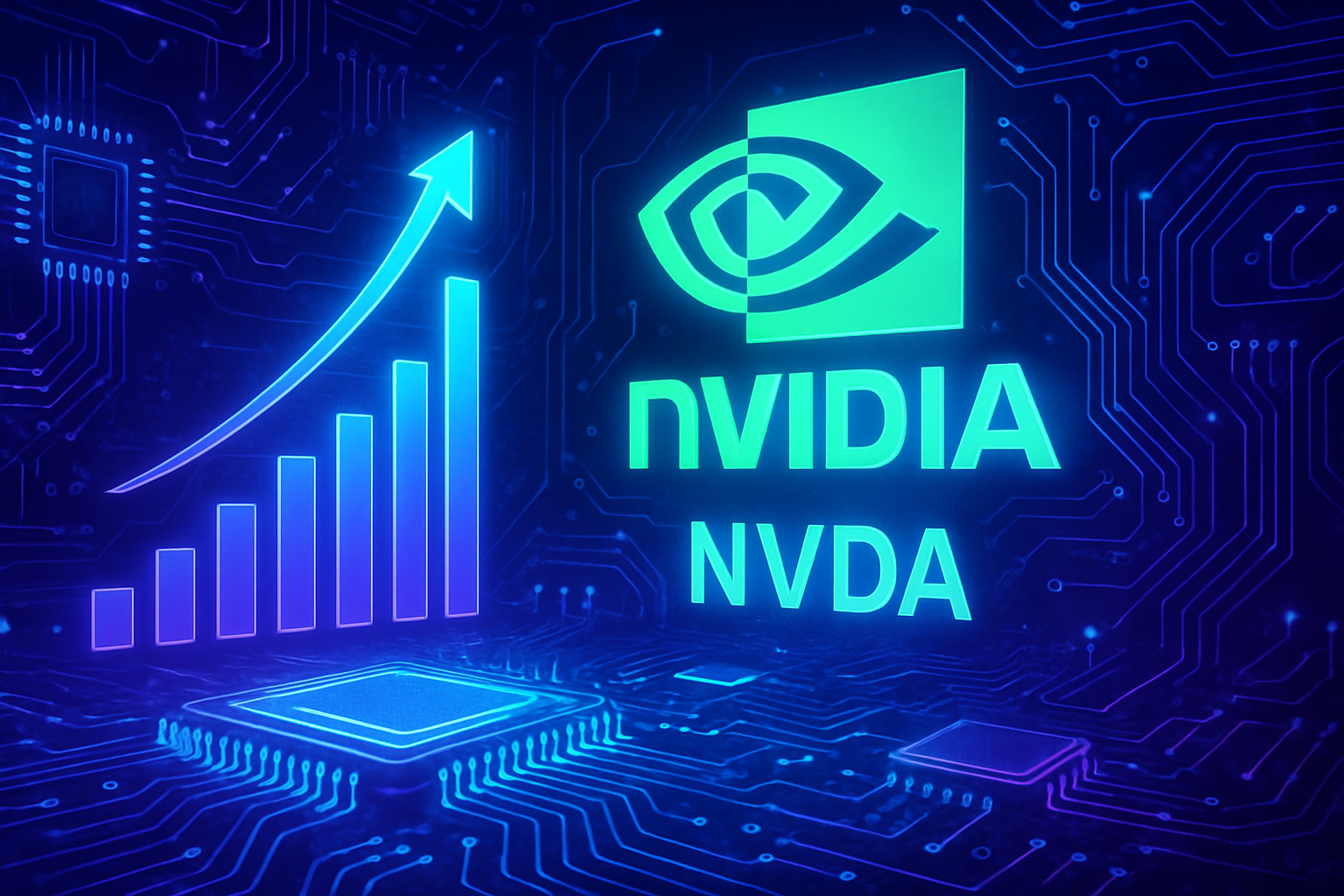Nvidia, AMD and Broadcom weakened by pricing uncertainties. The semiconductor sector is under unprecedented pressure, causing recent stock market collapses. Major players, Nvidia, AMD, and Broadcom, are seeing their shares plummet, intensifying fears among investors. Regulatory changes targeting chip exports exacerbate these concerns in an already volatile market. The American technology hegemony could waver in the face of rising geopolitical tensions. The future of these tech giants now seems uncertain, raising countless questions.
Nvidia in free fall
The American semiconductor giant Nvidia experienced a spectacular plunge in its stock, showing a drop of 16.97% to $118.42. At the end of this tumultuous day in the financial markets, the accumulated loss amounts to nearly $589 billion, one of the largest in recent stock market history.
Impact of the AI market
Concerns about artificial intelligence and its economic implications dominate current news. The algorithmic model of the new Chinese application DeepSeek has caused a shockwave, contributing to the decline in stock prices of industry giants, including AMD and Broadcom.
Reactions on Wall Street
Wall Street posted mixed results in an atmosphere of uncertainty. Investors reveal increasing concerns about a possible technological solution that could be more advantageous than that offered by Nvidia. This trend could signify a turning point in the race for innovation in the semiconductor sector.
The alarming figures
Following this drop, Nvidia, AMD, and Broadcom saw their respective market capitalizations suffer vertiginous losses. Nvidia, which had reached a value of $3.5 trillion, now faces major challenges. The company is experiencing not only an immediate loss but also a potential impact on its sales forecasts for the coming years.
Sales restrictions
American authorities are considering imposing additional restrictions regarding the export of Nvidia and AMD chips to certain countries. These franchises could limit their presence in new markets, exacerbating the concerns already present in the investor community.
Strategies of major players
Intel, for its part, is attempting to make a comeback by deploying its 18A manufacturing process in collaboration with companies like Nvidia and Broadcom. This initiative aims to restore Intel’s position in an increasingly competitive sector.
Technological developments
As the semiconductor market evolves, companies like TSMC and ASML are witnessing the growing importance of AI in their business strategies. TSMC, in particular, is reporting rising net profits due to strong demand for AI-related chips. An in-depth article on these performances is available here.
Innovations and research
Engineers at MIT are working on the development of 3D chips, showing a significant advancement in the semiconductor field. These innovations could potentially alter the technological landscape and enhance AI capabilities. More details on their work are accessible here.
Uncertain conclusion for the sector
Nothing suggests an immediate easing of tensions in the semiconductor sector. Competition is intensifying, and companies must adapt to avoid falling behind. The political and economic decisions of the coming months will determine the future of many players, particularly Nvidia and its main competitors. Their prospects remain vague in an unstable global environment.
For updates on the movements of American companies in response to competition, see this fascinating article on the proposed treatments for Nvidia and AMD chips here.
The strategic challenges posed by increased competition highlight the need for strong leadership through innovative research. The current dynamics could also prompt changes in corporate management, as evidenced by the recently announced fundraising by Altman for Rain AI. A comprehensive article on his projects and goals is available here.
Frequently Asked Questions about Nvidia, AMD, and Broadcom in the Face of Pricing Concerns in the Semiconductor Sector
What are the main causes of the decline in shares of Nvidia, AMD, and Broadcom?
Concerns about increased competition, particularly with the introduction of new technologies by companies like DeepSeek, as well as uncertainty regarding export restrictions and market volatility, have contributed to this decline.
What impact do pricing concerns have on the semiconductor sector?
Pricing concerns create an atmosphere of uncertainty for investors, leading to valuation drops in key companies like Nvidia, AMD, and Broadcom, which are crucial for global technological development.
How does the decline in shares affect innovation in the semiconductor sector?
The decrease in market capitalization could affect companies’ ability to invest in research and development, thus hindering innovation and the production of new technologies.
Should investors be concerned about the current situation of Nvidia, AMD, and Broadcom?
Yes, investors should be attentive to market developments, including announcements of financial results and changes in competitive dynamics, as this can affect the future performance of these companies.
What measures are these companies taking to counter their stock value decline?
Companies like Nvidia, AMD, and Broadcom may seek strategic partnerships, improve operational efficiency, and invest in future sectors such as artificial intelligence to stabilize and revitalize their growth.
Are there any investment options to consider in this context?
Investors might consider exploring alternative companies in the semiconductor sector, but must also assess the long-term recovery potential of Nvidia, AMD, and Broadcom before making decisions.
What are the future forecasts for the semiconductor sector in light of these fluctuations?
The semiconductor sector could experience continued volatility in the short term, but demand for advanced technologies is expected to support a long-term recovery, especially with the rise of artificial intelligence and technological applications.
How long might the current downward trend last?
It is difficult to predict the exact duration of this trend, as it depends on several external and internal factors, including tariff policies, companies’ financial performance, and overall economic conditions.
What lessons can investors learn from this situation with Nvidia, AMD, and Broadcom?
Investors can learn the importance of diversifying their portfolios and staying informed about market developments to better anticipate investment changes in dynamic sectors like semiconductors.






